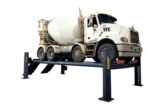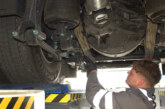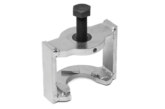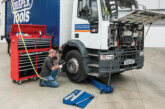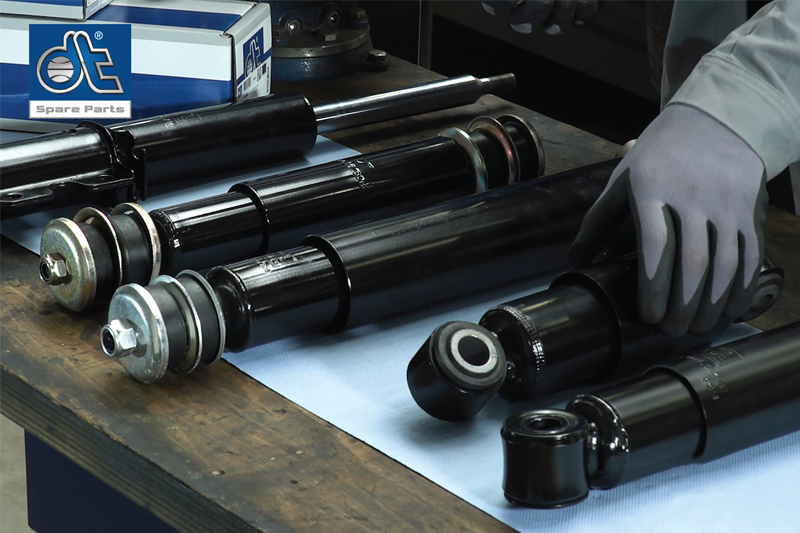
Vibrations and shocks can cause loss of control, reduce braking efficiency and increase wear and tear on the vehicle. Mark Todd, general manager at Diesel Technic UK & Ireland, takes a closer look at shock absorbers and why they are crucial for driving safety in trucks, trailers, buses and vans.
Shock absorbers play a crucial role in ensuring driving safety by reducing the vibration of the vehicle’s unsprung mass, which includes the wheels, tyres and axle components. They also mitigate the impact of shocks caused by uneven road surfaces by absorbing and dissipating the energy from them.
This improves vehicle stability, handling and ride comfort, while also reducing the risk of accidents and improving the lifespan of the vehicle’s components. Without properly functioning axle shock absorbers, vehicles can become unstable and difficult to control, especially during sudden stops, turns or evasive manoeuvres. Ensuring that axle shock absorbers are well maintained and in good condition is essential for safe and reliable operation.
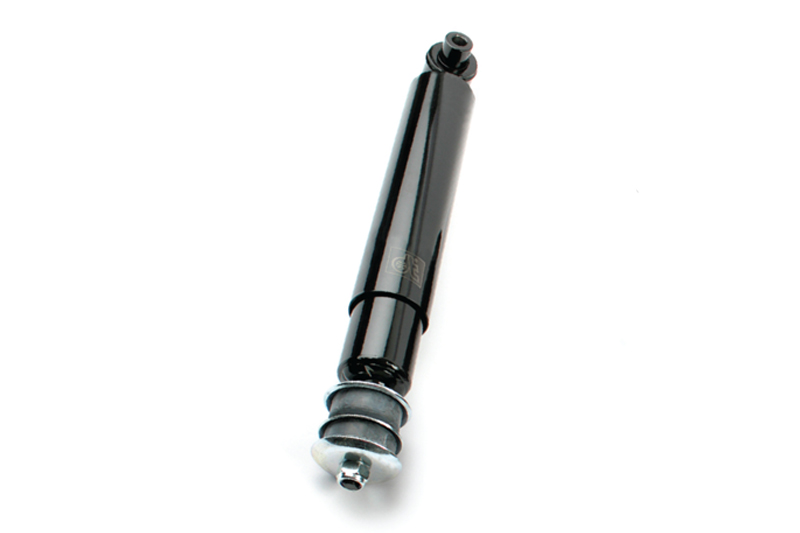
How they work
When setting the damping level parameters, a balance is sought between comfort (low damping force) and driving safety (high damping force).
Inside the shock absorber, an operating piston attached to a piston rod moves within an oil-filled tube. As the piston rod moves axially, the oil is forced through narrow channels and valves, creating resistance that increases with the speed of the piston motion and, consequently, the damping effect.
Most good quality shock absorbers, such as those from DT-Spare Parts, are designed for a service life of 10 million cycles. Corrosion resistance is tested in a salt spray test for 500 hours. In addition:
- The function of the shock absorber is guaranteed even at extreme temperatures of between -40 °C and + 70 °C.
- The reinforced sheet metal casing tubes have a thickness of 2.5 mm. This prevents premature corrosion.
- The piston rod has a thickness of 22 mm and is furnished with a chrome plating of at least 25μ.
- The high-quality, multi-lip piston rod seal adjusts itself to normal wear and tear.
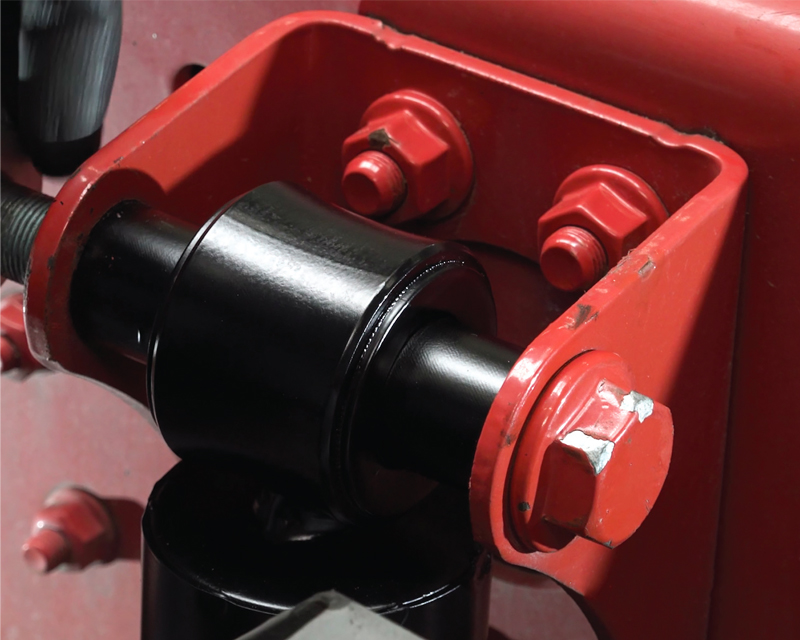
Tell-tale signs
In their workshop video on replacing shock absorbers, youtu.be/0JubeamqMYc Diesel Technic’s Parts Specialists Kevin and Lars show how a defective shock absorber can be identified by the oil leaking from the damper tube. Other indicators include uneven tyre wear. The two experts also note that worn suspension can lead to a premature wear or failure of the shock absorbers.
Replacement
When it comes to replacing shock absorbers, here are some of the Parts Specialists’ top tips. The first thing is to ensure you are only using shock absorbers suitable for the vehicle, and in accordance with the manufacturer’s specifications.
- Always replace shock absorbers in pairs, i.e. at both ends of the respective axle. Make sure that axles, shock absorber mounts, anti-roll bars and the associated chassis components are undamaged. If necessary, perform repair work and axle alignment (for example, after accidents) before exchanging the shock absorbers.
- Check that the shock absorbers are intact. Do not make any modifications to the shock absorbers. Do not open or heat the shock absorbers under any circumstances.
- During the assembly, always observe the part’s correct arrangement for pin joint/supporting joint.
- The shock absorber‘s piston rod must not be damaged during assembly. Only use the designated tool to counter the piston rod.
- In the case of a pin joint, protect the rubber parts from grease during assembly. Slightly lubricate the clamping bolts for a supporting joint during assembly.
- Make sure that the shock absorbers are not assembled whilst under tension. It is imperative to check that the fastening points are aligned. Please note: a defective or missing end stop for the vehicle spring travel could result in an overload and thus lead to damaged shock absorbers.
- Do not tighten the screws of the shock absorbers until the vehicle stands on its wheels. Observe the recommended tightening torques for shock absorbers with pin joint or supporting joint. Do not use an impact screwdriver for the assembly.
- If your truck is equipped with a self-levelling suspension system, you have to make sure that it is properly adjusted after the assembly of the new shock absorbers.
- Avoid excessive or uneven, one-sided loading of the vehicle and observe the correct tyre pressure. Avoid excessive stress due to extreme road conditions.
- Prevent the contact of primer, paint, supplies (e.g. oil, fuel etc.) or preservation wax with the shock absorbers.
- Shock absorber mounts, steering and chassis components should also be checked in the course of the regular maintenance routines. Please note: leaking shock absorbers must be replaced, since it is a safety-relevant component. After an accident the shock absorbers should be replaced as a matter of principle.
- Never assess shock absorbers after driving in wet conditions. If in doubt, wipe the shock absorber down and examine it again after a few days. Road dirt clinging to the shock absorber can easily be mistaken for a leak. Deposits of oil mist can be visible on dry shock absorbers. With an increasing operating time it might become apparent on approximately a third of the reservoir tube. This is not to be regarded as leakage.
- Always dispose of old/defective shock absorbers properly – ideally at a specialist workshop.
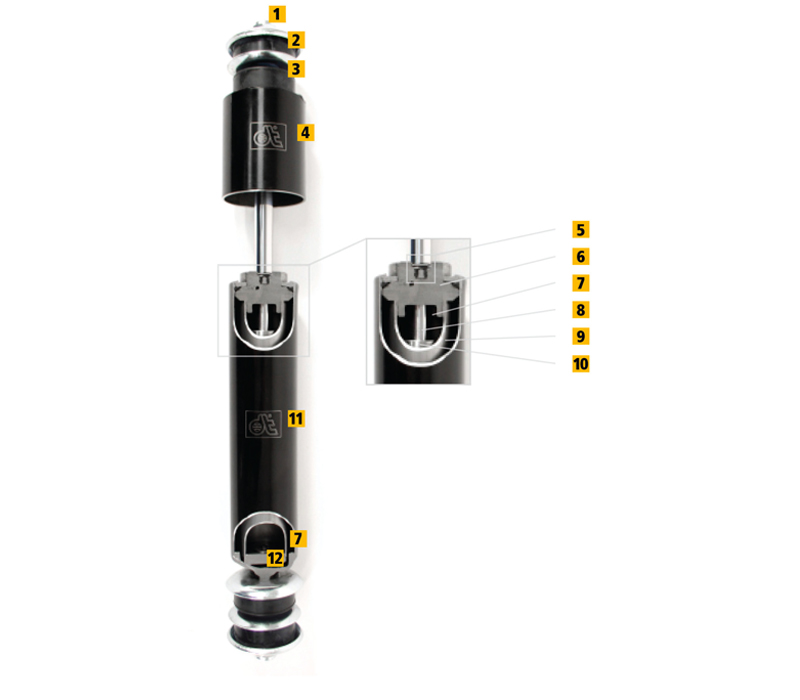
Anatomy of a shock absorber
- Nut
- Rubber bushing
- Washer
- Protection tube
- Multi-lip piston rod seal
- Guide plate
- Hydraulic fluid
- Cylinder tube
- Piston rod
- Piston
- Casing tube
- Cylinder valve



![Bosch outlines ESI[tronic] workshop software](https://cvwmagazine.co.uk/wp-content/uploads/2025/07/Bosch-ESItronic-25-165x109.jpg)


